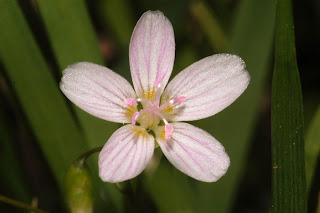
To a Humming Bird in a Garden
George Murray
BLITHE playmate of the Summer time,
Admiringly I greet thee;
Born in old England’s misty clime,
I scarcely hoped to meet thee.
Com’st thou from forests of Peru, 5
Or from Brazil’s savannahs,
Where flowers of every dazzling hue
Flaunt, gorgeous as Sultanas?
Thou scannest me with doubtful gaze,
Suspicious little stranger! 10
Fear not, thy burnished wings may blaze
Secure from harm or danger.
Now here, now there, thy flash is seen,
Like some stray sunbeam darting,
With scarce a second’s space between 15
Its coming and departing.
Mate of the bird that lives sublime
In Pat’s immortal blunder,
Spied in two places at a time,
Thou challengest our wonder. 20
Suspended by thy slender bill,
Sweet blooms thou lov’st to rifle;
The subtle perfumes they distil
Might well thy being stifle.
Surely the honey-dew of flowers 25
Is slightly alcoholic,
Or why, through burning August hours,
Dost thou pursue thy frolic?
What though thy throatlet never rings
With music, soft or stirring; 30
Still, like a spinning-wheel, thy wings
Incessantly are whirring.
How dearly I would love to see
Thy tiny cara sposa,
As full of sensibility 35
As any coy mimosa!
They say, when hunters track her nest
Where two warm pearls are lying,
She boldly fights, though sore distrest,
And sends the brigands flying. 40
What dainty epithets thy tribes
Have won from men of science!
Pedantic and poetic scribes
For once are in alliance.
Crested Coquette, and Azure Crown, 45
Sun Jewel, Ruby-Throated,
With Flaming Topaz, Crimson Down,
Are names that may be quoted.
Such titles aim to paint the hues
That on the darlings glitter, 50
And were we for a week to muse,
We scarce could light on fitter.
Farewell, bright bird! I envy thee,
Gay rainbow-tinted rover;
Would that my life, like thine, were free 55
From care till all is over!


















































